The Invaluable Search and Rescue (SAR) Dogs of Montana
The golden retriever bounds across the driveway, wiggling and barking with excitement.
Owners Isaac Fleming and Renee Freeman laugh, saying that Wylie just got back from a nine-mile run, and still has energy to spare. He flops down on their living room floor, looking less like a patrol dog and more like a goofy, happy family member.
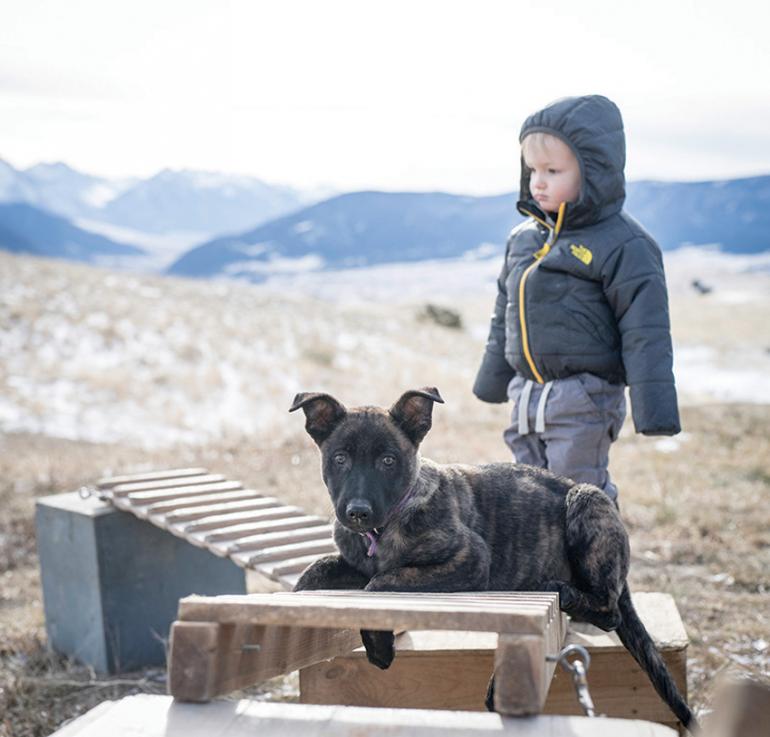
He is both. In the winter, this dog has an important role as an avalanche patrol dog at the Yellowstone Club, and his training doesn’t stop during the “off season.” The difference between Wylie and a non-working pet is immediately notable. He is incredibly attentive and responsive—almost fixated on Fleming, his teammate since Wylie was a nine-week-old puppy. Sure, he looks like a pet, but there’s something else there.
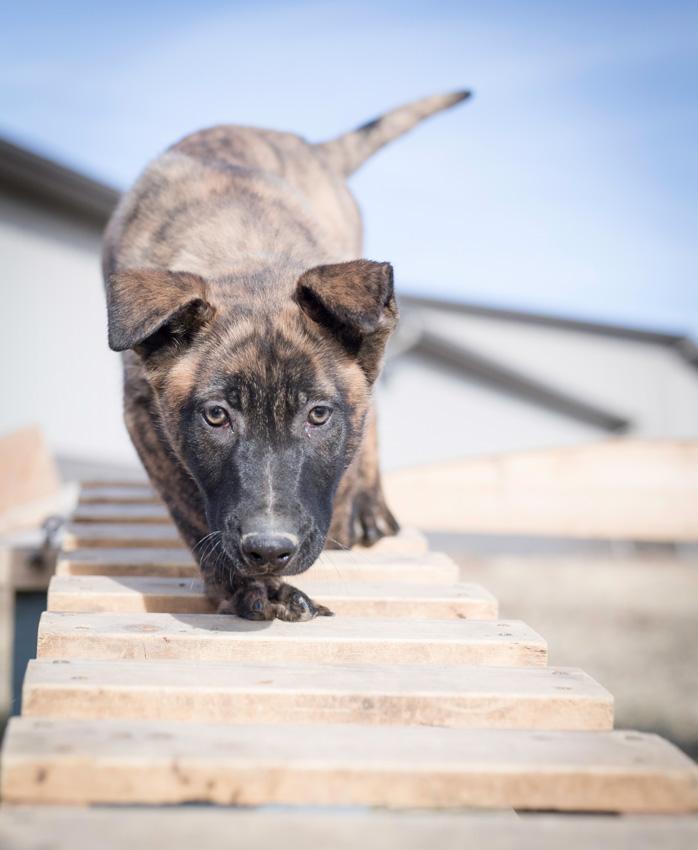
Fleming has been working as a ski patroller for nine seasons, and has had Wylie for four. After spending several years patrolling on his own and becoming well-versed in the world of avalanche rescue, Fleming said he was looking to take his skills to another level.
With that in mind, Fleming found Wylie from hunting dog breeder in Coeur d’Alene, Idaho. Dogs bred for hunting display many of the characteristics desirable in a SAR dog. Both types of working dogs have a strong prey drive, fierce loyalty, and a need to work. Some of the most common SAR dog breeds include labrador and golden retrievers, German shepherds, Belgian malinois, border collies, and bloodhounds.
Founders of True North Search Dogs, Sam and Larry Heigh of Helena, fell into the field in a similar fashion. Longtime community volunteers, they were looking for more ways to become involved. When they decided to get a new dog, they chose one who would do more than just be a pet, and decided to start training in canine search and rescue. In late 2002, they joined their local SAR group. Since then, they have trained multiple SAR dogs, founding the nonprofit True North Search Dogs in 2009.
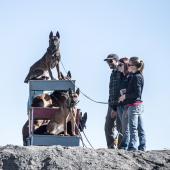
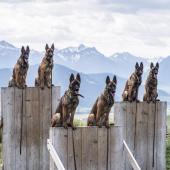

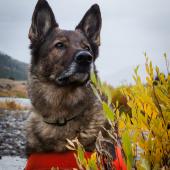
Heigh is currently working with two dogs: Tikaani is a full-fledged SAR dog, and Storm is nine months old and still in training. All dogs in the group—with members in Montana, Wyoming, and Utah—are trained and certified in multiple disciplines, such as land and water cadaver, trailing, wilderness air scent, evidence, and more.
The term “SAR dog” encapsulates a whole world of specialties. Tracking dogs follow a human scent along the ground. These dogs use articles of clothing with the victim’s scent on it to understand what they’re looking for. Air-scenting dogs follow airborne human scent, and don’t always utilize a starting point like clothing articles. These are the dogs who locate victims buried under an avalanche, or cadaver dogs searching on land or water.
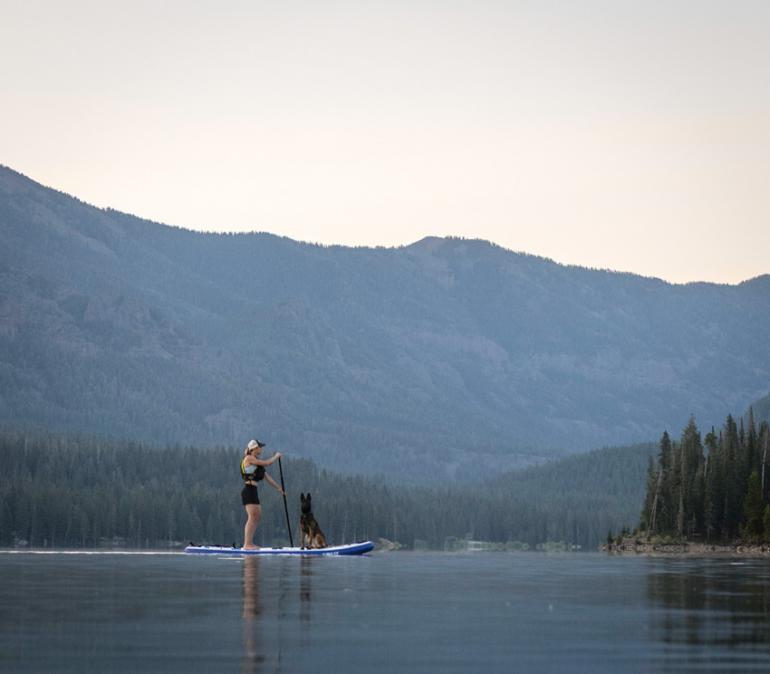
To put it into numbers, humans have about six million olfactory receptors. Dogs can have up to 300 million. We cannot fathom what it would be like to possess such an extraordinary sense of smell. Depending on the breed, dogs can have 10,000 to 100,000 times more acute sense of smell than us, which is how the SAR dogs do their job, tracking what would be imperceptible scents through the air, on undergrowth, and even over water.
SAR Dogs Across Montana
While the Get Lost bumper sticker might be cute, it really is easy to get lost in Montana. The state is home to over three million acres of wilderness, with rugged mountains, dense forests, hundreds of waterways, and countless opportunities to get turned around right out of your backyard. Any time day or night the call might come from a law enforcement agency or the county SAR organization, looking for help locating people with all levels of backcountry experience. Calls might come in for a missing backpacker, a child who wandered out of the campsite on a family trip, or victims of an overturned boat.
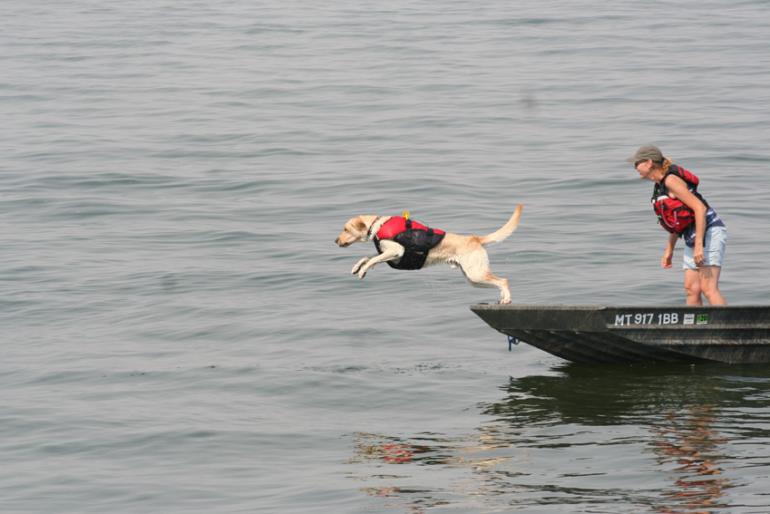
SAR teams throughout Montana are called out for land, water, and snow rescue, resulting in up to 30 calls a year for True North Search Dogs, and record visitation at ski resorts across the state creates a necessity for avalanche dogs to be on a hill on any day the resorts are open.
Bonnie Whitman has been working with SAR dogs since 1988. Her group, Western Montana Search Dogs, is based out of Gallatin County, and they often train and collaborate with True North Search Dogs as well as other teams across the state. Members of Western Montana Search Dogs are experienced in SAR facets of swift water, HAM radio, and helicopter operations, and along with their K9 partners, create an excellent well-rounded team, instrumental in SAR operations across Montana.
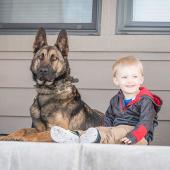
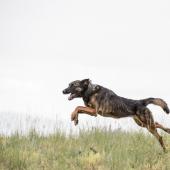
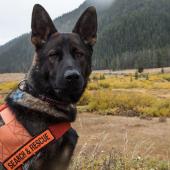
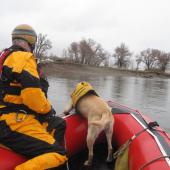
Whitman is a former park ranger, currently working with Sabre, her 5th German Shepherd. She is a longtime proponent of the value of K9 team members in search and rescue efforts, saying: “Not only are [SAR dogs] helpful with lost subjects, they are also extremely helpful locating injured or unresponsive people who cannot help themselves to seek assistance….They are invaluable at night.”
What Does it Take to Become a K9 Team?
No matter what discipline the K9 team certifies in, training takes years, with continued maintenance and certifications even after passing rigorous field tests. Plus, many K9s train and certify in multiple disciplines, all with their own necessary certifications.
From day one, all future SAR dogs learn basic obedience, progressing to field-specific training after dialing in the fundamentals. Fleming stresses the importance of ensuring the dog enjoys the training, seeing it as more than a game than work: “These are life-saving scenarios, but we make it the best game in the world—we are super high energy during training, the dog has to want to do it.”
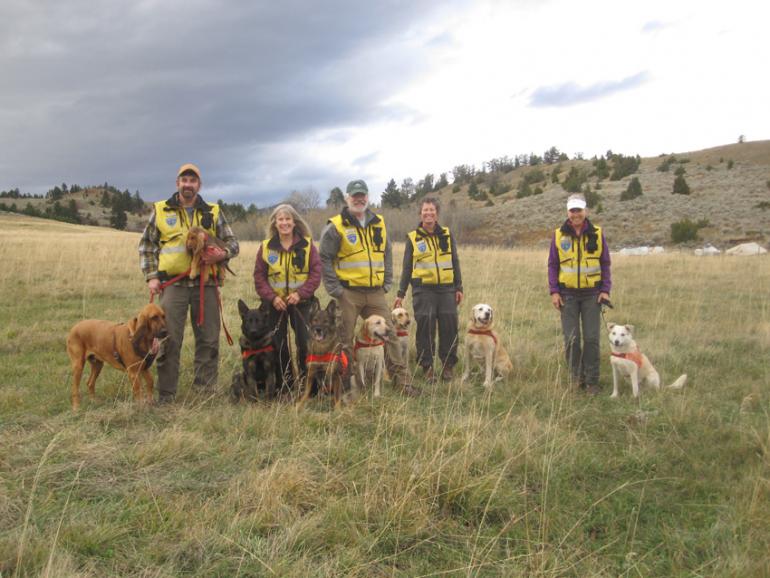
After the dog has an excellent grasp of recall, attentiveness, and basic commands, handlers begin incorporating nose work and searching. What begins as basic hide-and-seek around the house turns into more complex search games, using enthusiasm and favorite toys as rewards.
The training builds quickly, adding time, distance, and distraction as additional elements. In the field, the dogs-in-training are brought to different scenarios, tasked with increasingly difficult scenes where they not only have to locate a person buried underground or under snow, but physically signal and help dig for the victim. The searches get harder and more realistic, testing the handler as well as the dog.
A team can’t be called to deploy until they are certified in that specific discipline, though many of the foundational skills would remain the same. The certifications can vary by state, county, or private resort, but most follow a similar format: “Many years ago,” Heigh explains, “a number of K9 SAR groups from multiple states got together and developed the Tri-State Standards that we have all agreed to certify to.”
For example, an air-scent test requires the K9 team to locate three people within a quarter-mile radius. The handler needs to navigate the area and understand how their K9 is working, and the K9 must return to the handler and give an indication that they found a person, and then immediately return to where the subject is hiding. Once that the test is passed, the team moves onto clearing an area of 120 acres, with three hours to search.
The field test for avalanche dogs is similar. For their test, Wylie and Isaac needed to clear an area of live scent in 30 minutes, and they didn’t know how many people were buried under the snow. There could be zero, one, or two “victims.” Each discipline has its own test, and all must recertify every two years.
The handlers have a serious job—they aren’t just spectators. They need to complete a “handler skills check-off list,” which includes not only the obedience of their K9, but demonstrated skills with navigation, map and compass, survival, first aid, radio communication, and more. Handlers will typically put 1,000 hours into a K9 during their first year, beginning training at eight weeks old and aiming to have them certified by one year old.
Working as a patroller or SAR volunteer is challenging, time-consuming work, but contributing to rescues and the importance of the work makes it worth the effort. “The most rewarding part is to be able to return someone to their family safe and sound,” says Heigh, “Especially when that person is a small child. Nothing feels better than to have a successful ending and see the joy on the parent’s faces.”
On top of potentially being able to save a life, the reward comes from the handler’s bond with their dog. “Being part of a patrol or rescue dog team is all about trust and having each other’s back,” says Fleming as Wylie rolls over and grins up at us, maybe hoping for a game, another run, or dreaming of winter at the ski hill.
Interested in Getting Involved?
SAR dogs are utilized all over the state, for everything from avalanche rescue to water and wilderness calls. Below are several active K9 groups in Montana. Keep in mind that training a SAR dog in any discipline is a huge investment in time and energy—the rewards are endless, but the commitment is real.
True North Search Dogs:
truenorthsearchdogs.org
Western Montana Search Dogs:
westernmontanasearchdogs.org
Absaroka Search Dogs:
absarokasearchdogs.org
Bridger Bowl Avy Dogs:
facebook.com/pg/BridgerBowlAvyDogs
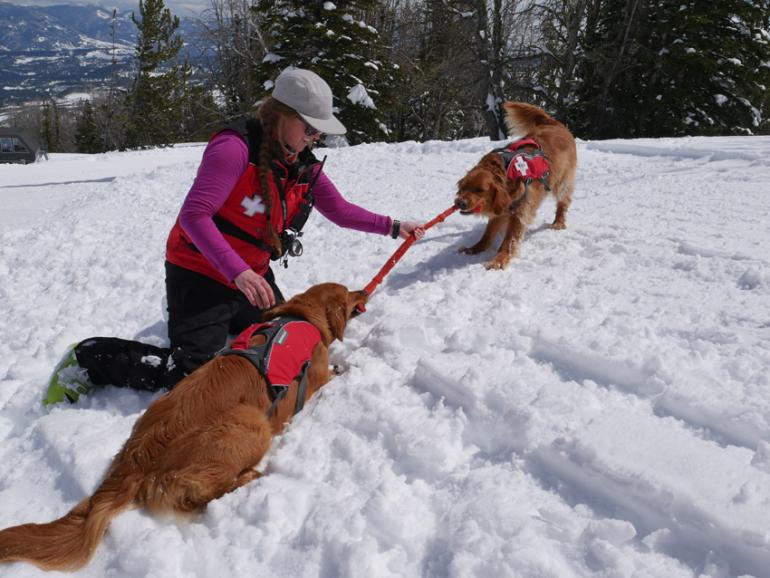

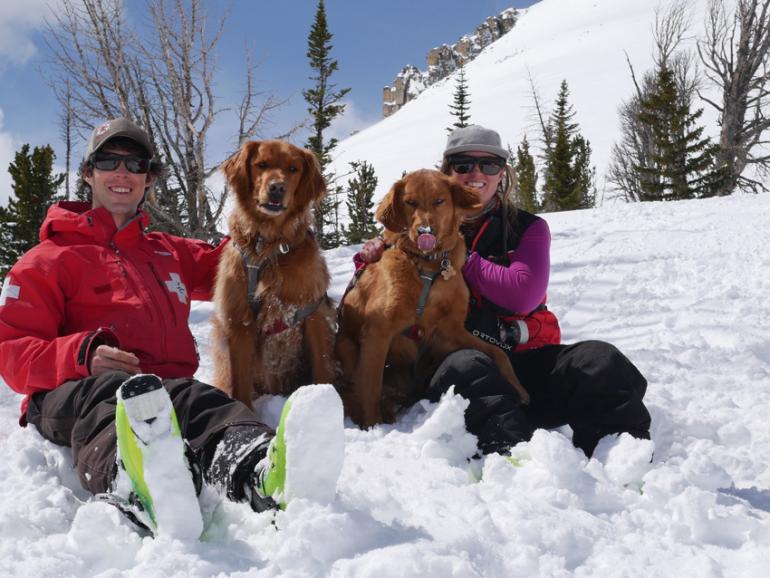
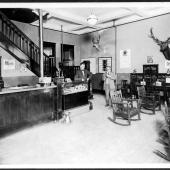









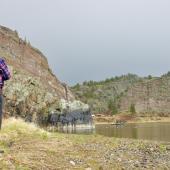
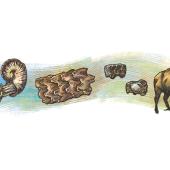
Leave a Comment Here